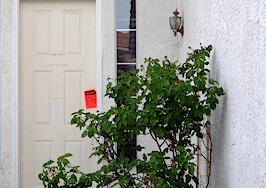The baggage that comes with vacant homes — higher crime rates and property devaluation — is still getting in the way of urban revival, especially in cities such as Detroit, Cleveland and St. Louis, according to a new report.
And, according to the Lincoln Institute of Land Policy report, “The Empty House Next Door: Understanding and Reducing Vacancy and Hypervacancy in the United States,” it is not limited to these cities.
Homes that have been abandoned have increased by 2.1 million units nationally, from 3.7 million in 2005 to 5.8 million in 2016, and property tax foreclosure processes, state laws and detrimental banks practices are stopping communities from doing anything about them, the research claims.
The report which analyzes U.S. Census and Postal Service data for 15 legacy cities including San Francisco and Boston, defined the term hypervacancy as when one in five homes sit vacant. The report found that this is now widespread. Cities such as Flint, Michigan, and Gary, Indiana, are suffering from “extreme hypervacancy,” where more than a quarter of units were vacant in each census tract.
In these conditions, “the market effectively ceases to function,” wrote the report author and city planner, Alan Mallach. “Houses sell, if they sell at all, only to investors at rock-bottom prices while the neighborhoods become areas of concentrated poverty, unemployment and health problems.”
In some cities, legal tools including “spot blight” eminent domain, vacant property receivership and land banking have helped communities take control of abandoned properties, but these approaches are not available or being used everywhere.
Nevertheless, there are success stories. The study highlights neighborhoods where cities have converted vacant properties into green space while Cleveland and Youngstown, Ohio, have made collaborative public-private efforts, doing a combination of demolition with rehabilitation to make refurbished homes available to buyers at affordable prices.
Mallach recommends in the report that cities make more effort to collect better data on vacancies, take steps to remove legal impediments to reuse and “use public strategies” to overcome obstacles to a more “market-driven” reuse of the properties.








